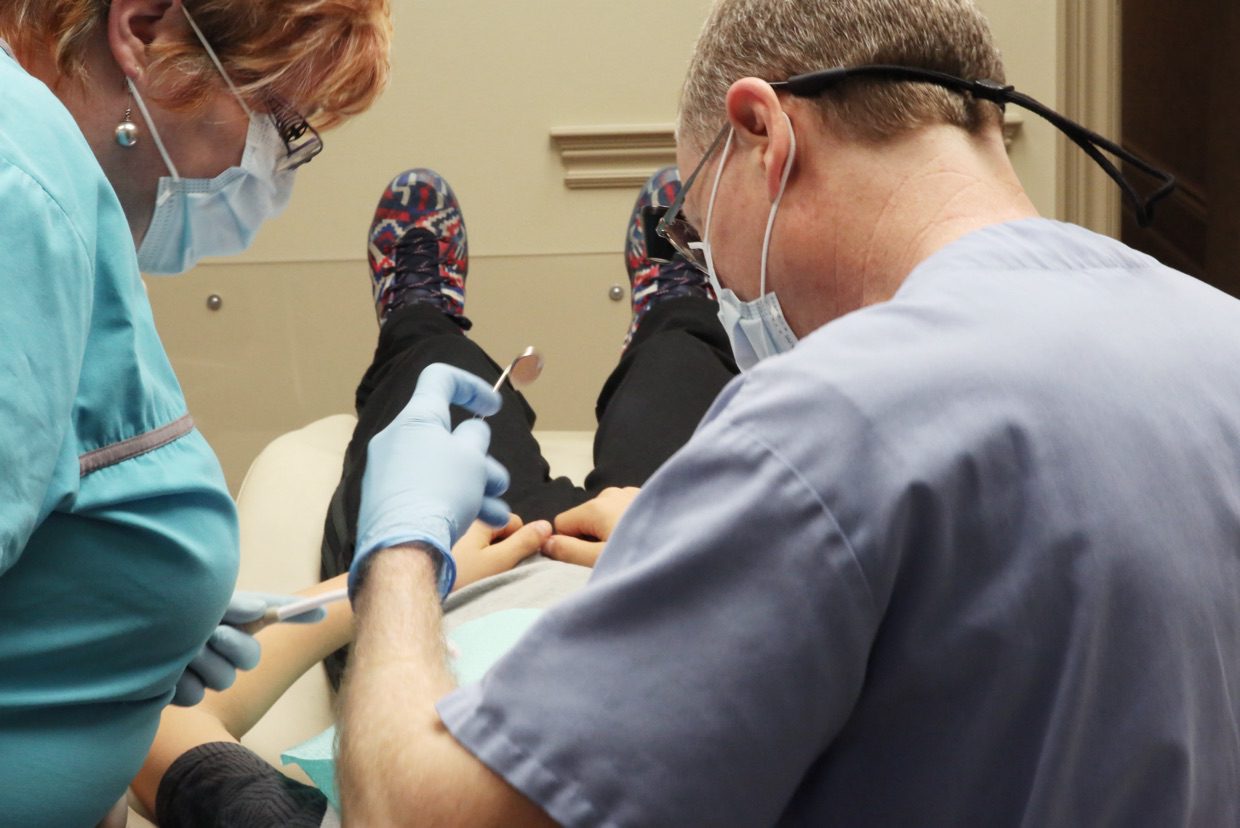Oral Care & Cleanings
Seventy-five percent of adults show signs and symptoms of gum disease or “periodontal disease.”

So what is periodontal disease?
It is a bacterial infection of the gums, ligaments and bone that support the teeth and anchor them in the jaw. The bacteria are normal inhabitants of the mouth. They live in plaque. If this plaque is left undisturbed, it eventually hardens (or calcifies) into tartar (or calculus). This process, if untreated, irritates and erodes healthy gum tissue. The early stage of periodontal disease is called gingivitis and if it progresses, defects begin to form between the teeth and gum tissues. Such defects are known as “pockets” and when the supporting bone becomes badly eroded, teeth can become loose and tooth loss may occur. This stage is called periodontitis.
What are the symptoms of periodontal disease?
Because gum disease is painless until the final stages, it often goes unnoticed. However, there are many indications of potential periodontal disease. Here is what to watch for:
- inflammation
- gums that bleed when you brush your teeth
- loose or separating teeth
- red, swollen or tender gums
- pus or discharge from the gums
- gums that have pulled away from your teeth
- a metallic taste/bad breath
Periodontal disease can easily be detected by your general dentist and dental hygienist. Regular checkups, ideally every six months, are crucial in catching periodontal disease in its early reversible stages. During your checkup, the color and firmness of your gums will be evaluated. A small measuring instrument is inserted between the tooth and the gums to measure the depth of the pockets. X-rays may be taken to evaluate the bone supporting the teeth.
How can I prevent periodontal disease?
Brush your teeth two to three times a day with a soft-bristled toothbrush. Hold the brush at a 45-degree angle to the gum line and gently clean where the gums meet your teeth. Clean between your teeth at least once a day with dental floss to remove bacteria, plaque and food particles that your toothbrush cannot reach. Eat a balanced diet, which includes a variety from each of the basic food groups. These may be altered to suit the specific needs of individual patients. Visit your dentist regularly for a preventative checkup and professional cleaning as required by your dentist or dental hygienist. Dental cleanings are essential in the prevention of gum disease and the maintenance of good oral health.
What can I do if I already have periodontal disease?
We will take care of you. In the early stages of gum disease, therapeutic treatment involves removing the plaque and calculus in the pockets around the tooth and smoothing the root surfaces. This is called “scaling” or “root planing.” We will assess an individual STP (supportive periodontal therapy) to meet your needs. In combination with proper daily home care, this is all that is often required to stop the advancement of the disease. If you wait until the symptoms are more advanced, or if the gum disease progresses despite the above efforts, a referral to a periodontist will be necessary. Don’t wait until it hurts. Periodontal disease can be prevented with regular dental visits.